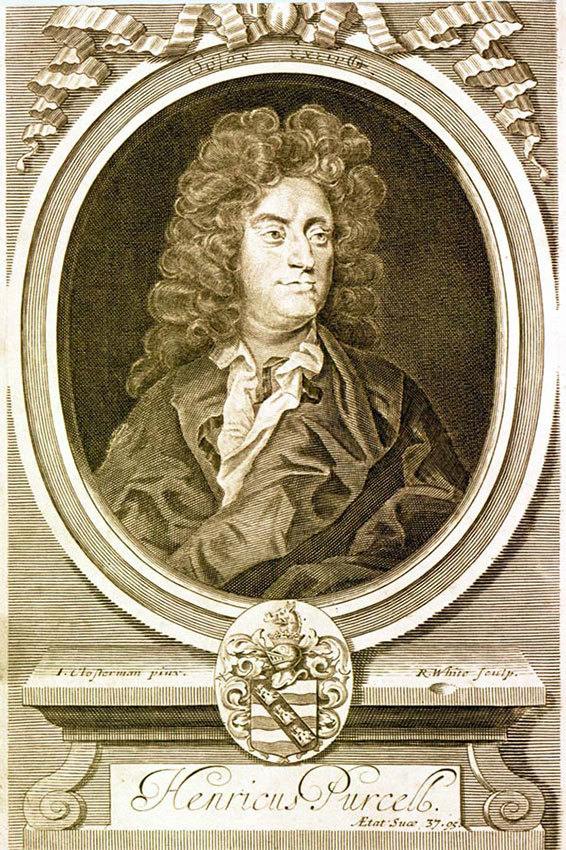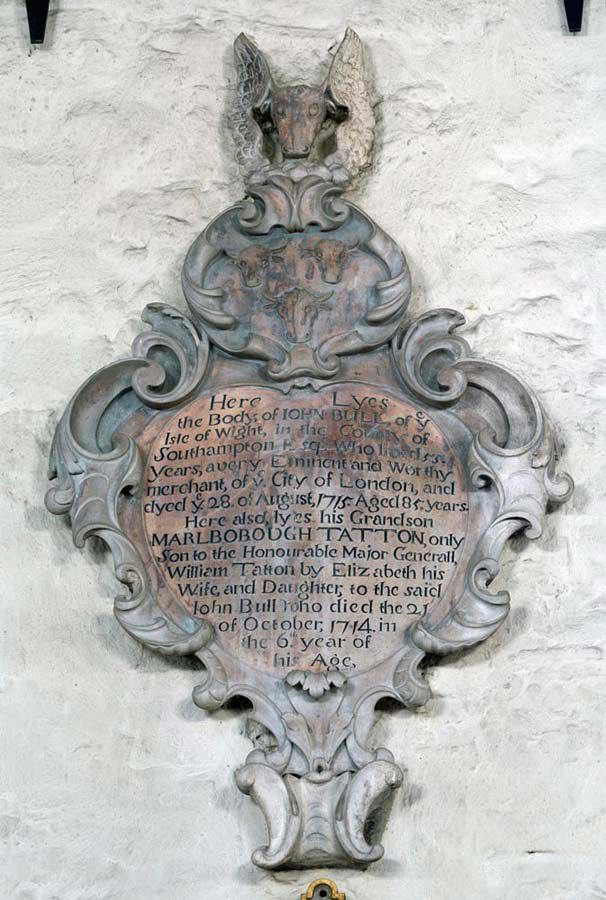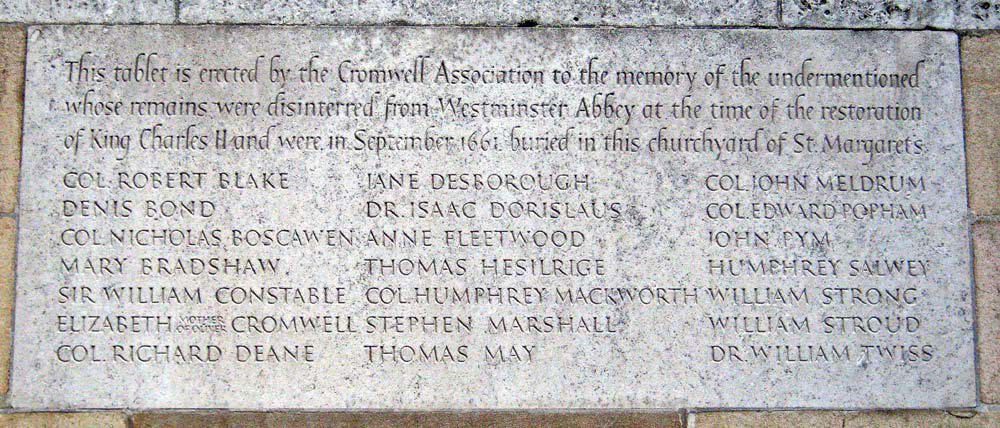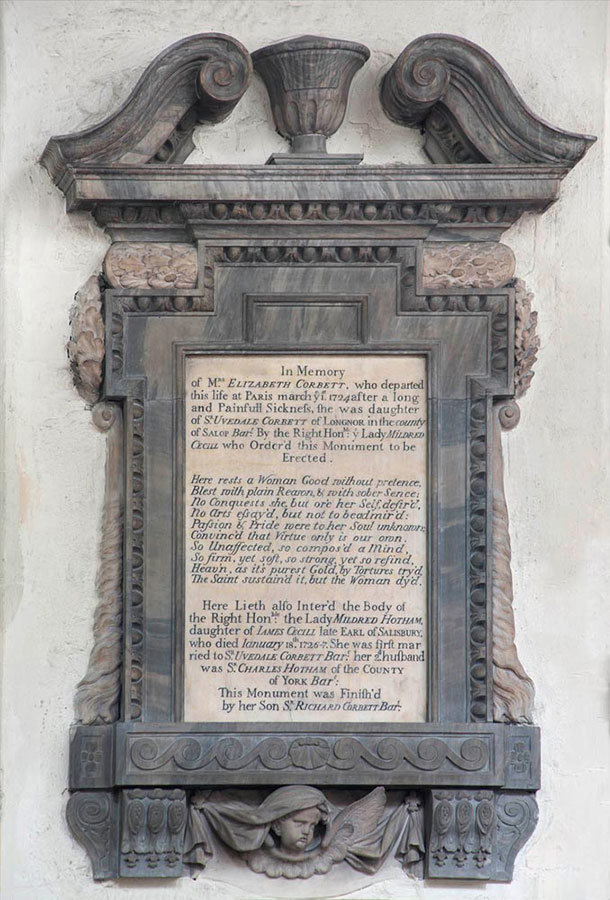Sir Peter Parker
In St Margaret's Church Westminster (now against the west wall but originally in the north aisle of the chancel) is a large monument to Sir Peter Parker who died fighting in America on 30th August 1814 (the monument's inscription gives a wrong date). This is signed by sculptor Christopher Prosperi. On a sarcophagus a helmeted warrior holds a medallion of Sir Peter, with naval emblems such as a cannon, muskets etc. A relief shows the stern of his ship Menelaus and Sir Peter dying in the arms of his men, with others firing their muskets. His body was returned to England and buried in the church at 5am on 14th May 1815. The inscription reads:
In the pious hope of a glorious Resurrection, pursued through virtue, faith and valour here lie interred the mortal remains of Sir Peter Parker, Baronet, aged XXVIII years, Captain of His Majesty's frigate Menelaus, an accomplished officer and seaman, who after landing with a part of his crew on the coast of America defeated an enemy supported by cavalry and artillery three times the number of his own forces; and in the moment of victory received a mortal wound, under which he continued to cheer his men to follow up their triumph, until, sinking under its fatal result, he fell into the arms of the companions of his glory and bravely surrendered on the field of battle his own gallant spirit to the mercy of heaven. He was the lineal descendant of three distinguished British admirals, of whose virtues and valour he was alike the inheritor. His great grand father was Admiral Christopher Parker. He was the eldest son of Admiral Charles Parker, whose father was the late Sir Peter Parker, Bart. of Bassingbourn Hall, Essex, Admiral of the Fleet, and his maternal uncle was the Honorable Admiral Byron. After fifteen years of active and intrepid toil in the service of his country, emulating the heroism of his ancestry, he thus gloriously closed his earthly career Aug. 3d. 1814. The officers and crew of His Majesty's ship Menelaus, on their return home, in testimony of their deep affliction at the fall of their beloved commander, and of their affection for his memory, have erected this monument, as well to him as to his ship's company, as to attest to future times their admiration of that heroic valour which distinguished him in life and ennobled him in death.
A Latin line follows which can be translated:
There is an appointed day for everyone. For all of us the span of our life is brief and irretrievable but to prolong fame by your deeds, this is the task of virtue. Virgil
He was the son of Vice Admiral Christopher Parker (died 1804) and his wife Augusta Byron, and so was a first cousin of the poet Lord Byron. His brothers were Sir Charles Parker (1792-1869), 5th baronet, and John (died 1835). He served in the navy in home waters and in the Mediterranean and the West Indies and on Nelson's ship Victory.
Tablet to his children
In 1809 he married Marianne, daughter of Sir George Dallas. Marianne (died 1851) married secondly in 1818 Michael Bruce. In St Margaret's is a tablet, now invisible behind the organ, to several of her children by both husbands. It reads:
This mournful tribute of affection is erected by Lady Parker to the memory of her beloved children who, reversing the laws of nature, have preceded her to the grave. Sacred to the memory of George Parker obt. [died] on the 16th of Nov. 1817 aged 3 years. Also of Catherine Bruce obt. an infant on the 3rd of April 1821. Also of Charles Edmund Parker obt. on the 20th of May 1823 aged 12 years. Also of Marianne Bruce obt. on the 14th of Feb. 1832 aged 12 years, and lastly, Commander Sir Peter Parker Bart. R.N. who fell a victim to the natural small pox on the 17th of March 1835 in the 26th year of his age. An awful illustration of the uncertainly of human life and the inscrutable ways of Providence, to whose divine justice she bows with resignation
The burial register actually gives George's date of death as 1816 and aged 2, and Charles Edmund's age as 10 years.
[A separate tablet also in the same place (signed Elgar, Park Lane) was erected by Lady Parker to her daughter Emma Harriet Bruce who died in November 1837 aged 13]
His grandfather Sir Peter Parker, 1st Baronet, born in 1721, had been buried in the church on 28th December 1811 but he has no monument or gravestone. He served in the Mediterranean and the West Indies and was knighted in 1772, becoming commodore in the Bristol, sailing to North America. During a bombardment of the fort on Sullivan's Island near Charles Town his ship was badly damaged by enemy fire. With Lord Howe he then took part in the capture of Long Island, New York and was Commander in Chief at Jamaica. After a victory over the French he was awarded with a baronetcy and became a Member of Parliament and Commander in Chief at Portsmouth. His wife was Margaret Nugent and they lived in Queen's Square, Westminster. His son Christopher died in 1804.
Further reading for various members of this Parker family
Oxford Dictionary of National Biography 2004
Wills of the family can be found at The National Archives
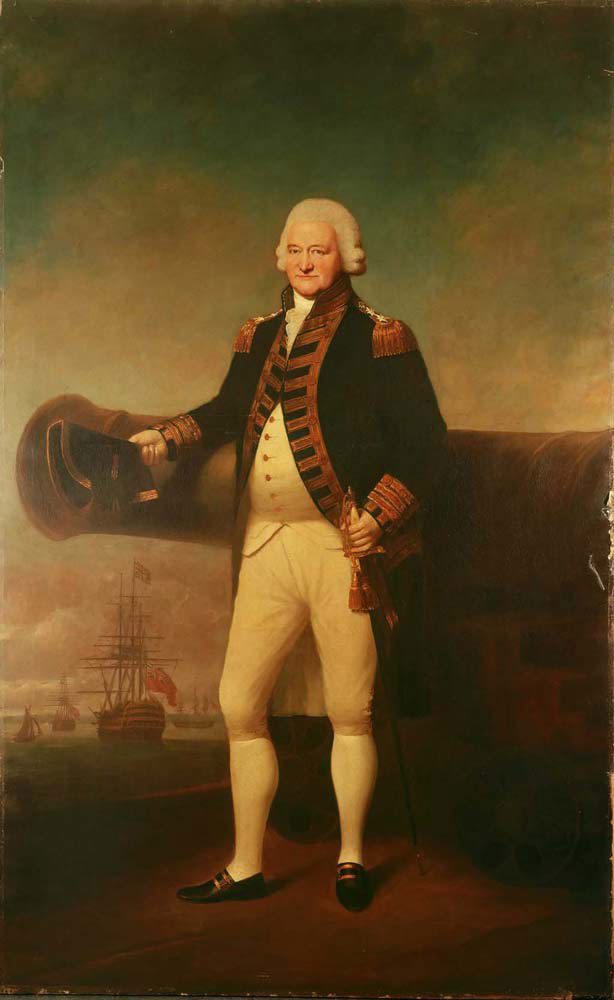
[Public domain], via Wikimedia Commons

This image can be purchased from Westminster Abbey Library
Image © 2025 Dean and Chapter of Westminster

This image can be purchased from Westminster Abbey Library
Image © 2025 Dean and Chapter of Westminster

